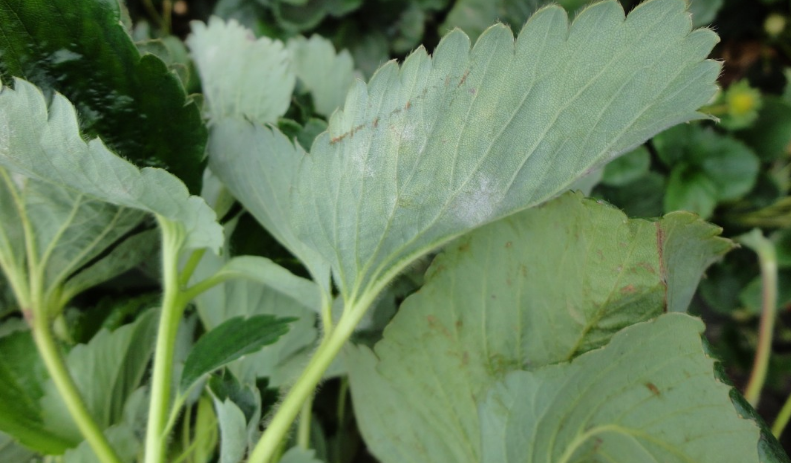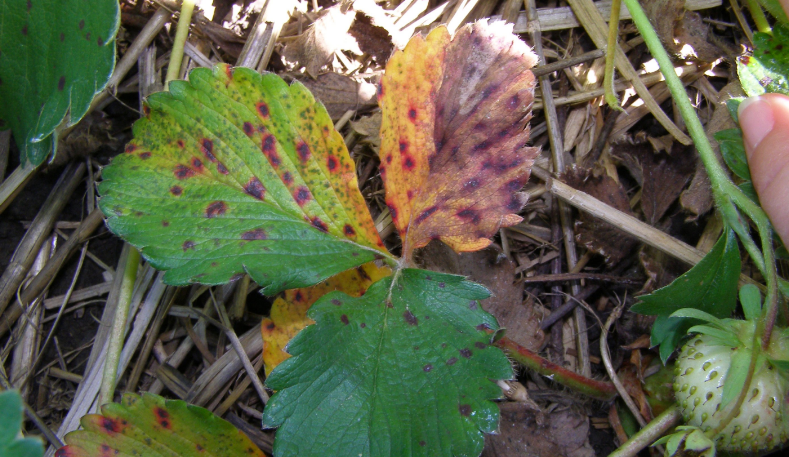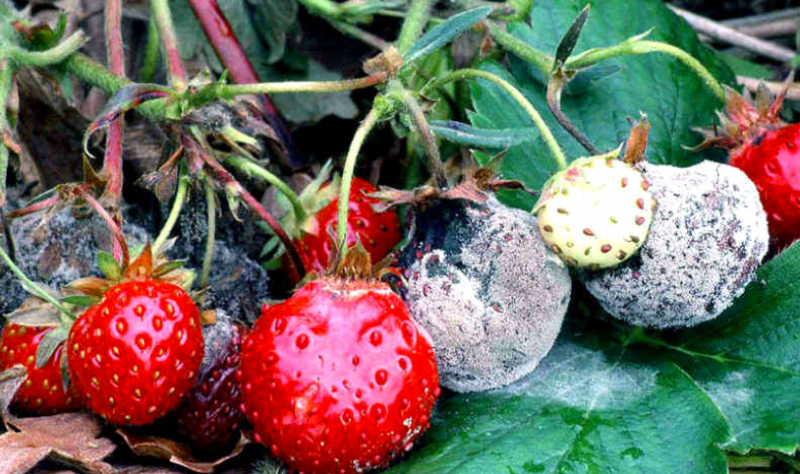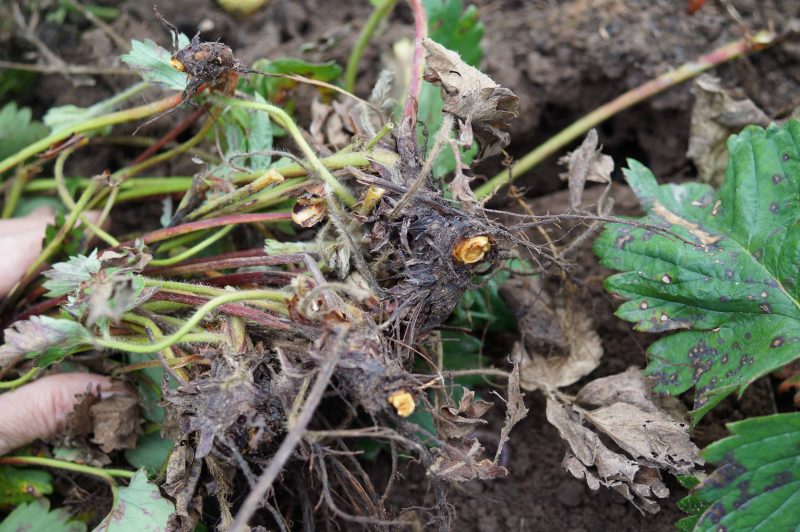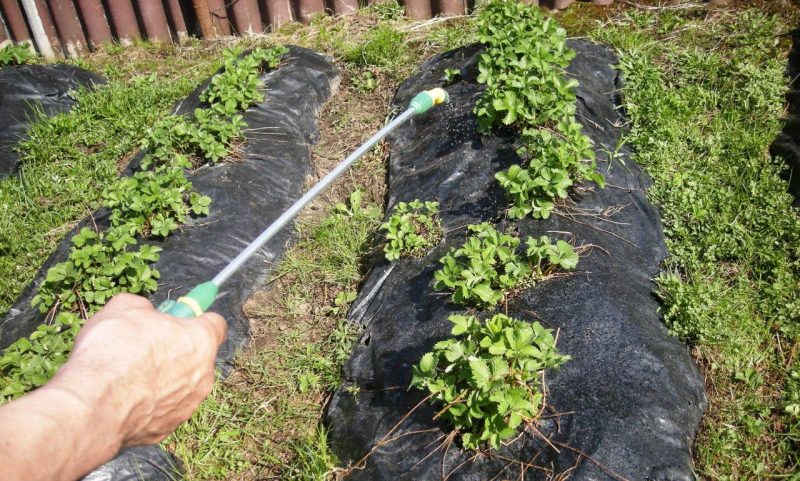Only healthy plants produce large and tasty fruits. Strawberry Disease May Deprive Sweet or Family Farmers The culture "attracted" many insects and ticks, but there are much more phytoparasites invisible to the eye, which also need to be fought.
Material Content:
Description of Strawberry Diseases
Harvesting is not one day. Strawberry treatment from diseases and an irreconcilable pest control begin long before flowering and are completed only with the onset of frost. They will help to figure out who is who in this variety of pathogenic organisms, descriptions with photos. After identifying phytoparasitis, it is easier to choose appropriate treatment methods.
Leaf rust
This fungal disease is most dangerous for young leaves from late May to early June. If spores get into plant tissue, then rust quickly spreads throughout the area.
- Signs of infection are yellow, brown, or brown spots on the upper side of the leaves.
- In the same places, small swellings appear - accumulations of fungus.
- Gradually, individual spots merge, damaged leaves are deformed, dry out and fall off.
- Bush growth stops because chlorophyll is destroyed and does not synthesize nutrients.
- Berries do not form or ripen. If the plants are not treated on time, then the strawberry dies.
Powdery mildew
One of the most common fungal diseases of berry and vegetable crops.
Powdery mildew looks like a white coating on the leaves, petioles. Later dark "spider webs" are formed.
- The mycelium develops on the underside of the leaf blade, deforms it.
- Then the whole plant looks like a drought: shoots and leaves become brown, curl, dry.
- With a strong spread of infection, berries are affected. Sick fruits remain small, acquire an unpleasant mushroom smell and taste.
The most suitable weather conditions for powdery mildew are high humidity and heat.
Verticillus wilting
Another fungal disease of strawberries spreads during the flowering period. Verticillin wilt affects primarily the root neck, lower leaves. Dark spots appear in the places where the fungus develops, tissue necrosis begins. With severe infection, the plant withers and dies.
Spores remain in the soil and can infect new bushes.
Verticillin wilt affects potatoes, nightshade crops, zucchini. If you plant strawberries after vegetables, then the mushroom penetrates the plants from the soil. Signs of infection are redness of leaf petioles, the death of the inner part of the root. Not only the destruction of diseased plants is required, but also soil disinfection.
Brown spotting
Spots on the leaves are typical signs of a number of diseases of the berry culture. Brown spotting is characterized by the presence of reddish dots. Subsequently, large irregular spots appear in their place. As the leaf tissue dies, the color becomes brown.
This type of spotting is less likely to affect peduncles, petioles, and peduncles. The causative agents of the disease winter on various organs of the plant, in the spring they infect new bushes.
Gray rot
Fungal disease develops even during flowering, is a serious danger to the fruit. The causative agent of gray rot rapidly spreads with high humidity, affects the entire garden, plot. Leaves and berries are covered with dark gray spots with a fluffy coating of the same color. Gray rot quickly destroys leaves, and then berries. The affected plant dies.
Strawberry Anthracnose
The causative agent of the disease infects all organs of the plant. The spores of the fungus are especially fast spreading with high humidity and insufficient aeration. Dark brown spots appear, leaves fall off, bushes wither. If you do not start the struggle, then 75 - 100% of the crop will die.
Black rot fruit
Various rot can be caused by fungal and bacterial infections. Affected berries acquire a watery consistency and an unpleasant taste. This group of diseases should be controlled using solutions of biopesticides (microbiological preparations).
Late blight
Late blight refers to wilting, in which the axial cylinder of the plant turns red, the development of the bush stops. Leaf blades remain small, acquire an earthy hue and bowl shape. The roots begin to become bare, blacken and dry out. The fungus is stored and accumulated in the soil.
It is necessary to change the plot for growing strawberries every 2 to 4 years.
Equally important is the timely prevention of infection:
- In autumn and spring, it is necessary to collect dry, diseased leaves on the plantation.
- Weeds must be removed during the season.
All plant residues are burned.
Methods for processing plants in autumn, spring
Growing a full-fledged crop of quality berries rests on three pillars: the use of planting material resistant to phytopathogens, compliance with agricultural technology and timely treatment of strawberry diseases.
Before planting bushes in open ground, it is recommended to carry out disinfection - lower the bushes for 2 minutes in a weak solution of copper sulfate (10 g / l). After this, the seedlings should be washed with running water.
It is possible to treat strawberries in autumn against fungi with Bordeaux liquid (1-3%). In specialized stores there is a concentrate that is diluted with water before use. Bordeaux liquid is easy to prepare on its own. For a suspension of 1% take 100 g of copper sulfate and quicklime in 10 l of water.
How to cook Bordeaux mixture:
- Separate quicklime separately in a small volume of water.
- An additional 5 L of water is added to the suspension.
- Separately, copper sulfate is dissolved and poured into milk of lime.
An opaque suspension of a sky-blue color is obtained.
After strawberries come out of the snow, they are sprayed with Bordeaux liquid 3% (300 g of copper sulfate, 400 g of quicklime per 10 l of water). You can repeat the treatment before budding to get rid of gray rot. Against brown spotting and rust, Bordeaux liquid (1 or 3%) is used three times: during budding, before flowering and after picking berries.
- Anthracnose strawberries are also treated with Bordeaux liquid. Sprayed before and after flowering, and then two weeks after picking berries. It is recommended to burn fallen leaves in which the pathogen of anthracnose hibernates.
- Against root and root rot spray "Fitosporin-M". The biological product protects strawberries from a complex of pathogens of fungal and bacterial diseases. "Fitosporin-M" is effective against powdery mildew, brown rust, black spotting, late blight, fruit rot.
- Bacterial fungicide "Alirin-B" is used against pathogens of various fungal diseases. A biological product is applied to the soil in spring and leaves are sprayed. Alirin treat infected bushes from fusarium, powdery mildew, rust, late blight, and gray rot. The prepared solution can be applied through the drip irrigation system or use a sprayer.
- The systemic fungicide "Topaz" is effective against the causative agent of powdery mildew. The advantages of the remedy are the absence of phytotoxicity, the protection of all plant organs. The solution is sprayed with strawberries in the spring before flowering and in the summer after harvesting the berries. Another universal fungicide is Fundazole. It has a long protective effect, it is not dangerous for bees and earthworms.
Resistant Strawberry Varieties to Disease
The number of strawberry varieties (garden strawberries) is over 3,000. Among this variety, you can choose cultivars that are less susceptible to various diseases.
List of 10 resistant varieties for the middle band:
- "Alba." Early variety, little affected by spotting, root rot and powdery mildew, less resistant to anthracnose.
- "Asia". The variety is not affected by spotting, but is susceptible to powdery mildew and anthracnose.
- "United Kingdom". A variety resistant to many diseases and pests.
- "Diamond". Bushes are little affected by powdery mildew, verticillous wilting, spotting, root rot.
- "Wondrous." The variety is resistant to verticillosis and gray rot.
- "Malvina." Bushes are little affected by diseases.
- Olbia. Variety resistant to fungal infection.
- "Pegasus". Strawberries are slightly affected by late blight, but are sensitive to powdery mildew.
- "Sasha." Large-fruited disease resistant variety.
- "Honey." Frost-resistant strawberries, little susceptible to infections of vegetative organs.
For cultivation on an industrial scale or on a personal plot, it is advisable to choose modern varieties. They are quite resistant to common phytopathogens. Breeders create high-yielding hybrids that may be more susceptible to infections. One of the effective measures for the prevention of diseases and pests is the planting of young bushes annually or after two seasons.



